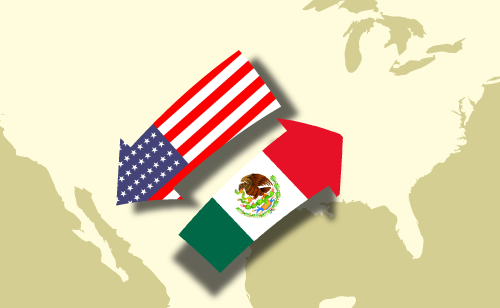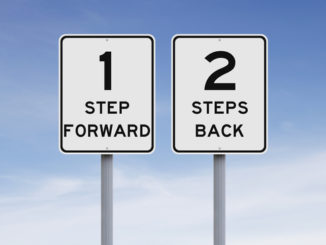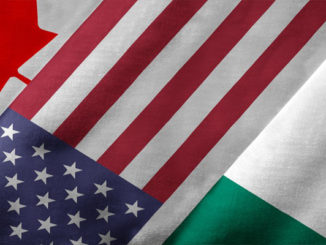
By Phil Gramm
The House’s 20% import fee is political industrial policy that will convulse the economy. Better to follow the 1986 model.
The goal of tax reform is to collect revenues while reducing the distorting influence that taxes impose on economic efficiency and growth. The 1986 tax reform stripped out deductions and credits—which had distorted resource allocation and sapped economic efficiency—and collected roughly the same amount of taxes with a 28% top individual rate and a 34% corporate rate that had previously been collected with a 50% top individual rate and a 46% corporate rate.
The economy boomed not only because the lower individual and corporate rates increased incentives to work, save and invest, but because stripping out tax-favored provisions reduced the drag on economic efficiency that is caused by allocating resources politically. Today the lesson of 1986 has been almost completely lost in the fixation on lower rates. The House border-adjustment proposal, with its 20% corporate tax rate, is a prime example.
Under that plan, revenues from exports would be excluded when determining profits for tax purposes, while the cost of imports would not be deductible as a business expense. That’s the equivalent of heavily subsidizing exports and imposing the new 20% corporate tax on imports. By assuming that the plan would not change international capital transactions, and therefore trade balances, the House assumes it would ultimately push up the value of the dollar by 25%.
This would offset the cost that the proposal imposes on consumers, who would be buying imports with a more valuable dollar. In the same way, the tax preference for exporters would also disappear as the cost of buying U.S. exports abroad rises with the dollar. Thus all exchange-rate-adjusted prices would return to where they were before border adjustment—except that with imports accounting for $600 billion more than exports, the 20% tax would produce a $120 billion annual revenue windfall.
In this happy world of assumptions, foreign producers, not American consumers, would absorb the cost of the new tax. Yet what is missing is any analysis of how tax preferences for exports and penalties on imports would drive up the value of the dollar. The real-world adjustment process would involve painful dislocations of capital and labor.
If imports cannot be deducted as a business expense, retailers selling imports and manufacturers using imported parts would face an immediate explosion in costs, which they would try to pass on to customers. Higher retail prices would result in fewer purchases, lower profits, layoffs, and the failure of marginal businesses. As the demand for imports declines, fewer dollars would be exchanged for foreign currencies to buy imports, and the value of the dollar would start to rise.
Similarly, since revenues coming from exports would not be taxable under the House bill, profits, capital investment and employment would surge in exporting industries. Cheaper U.S. exports would cause foreigners to demand more dollars to purchase them, and the value of the dollar would rise.
If the value of the dollar actually appreciates over time by 25%, all of these business adjustments then would have to be reversed. The 12% of the economy that produces exports would experience first a boom and then a bust, while the 15% of the economy using imports would experience a bust and then a boom.
If everything eventually returns to where it started—an improbable event, given that the value of U.S. exports plus imports makes up only 0.3% of total dollars traded—border adjustment is simply a gimmick that convulses $5.2 trillion of the economy to collect $120 billion in new taxes. If the value of the dollar does not rise by 25%, border adjustment is a massive industrial policy that distorts a larger share of the economy than all the special-interest provisions in all the other U.S. tax laws combined.
Even if we imagine that the value of the dollar could instantly rise by 25%, circumventing the adjustment process, the list of unintended consequences would still be immense. Much of the world’s public and private debt is denominated in dollars, and a rapid increase in the value of the dollar would cause massive financial upheavals and bankruptcies. A 25% increase in the dollar’s value would imperil American investments abroad—including hundreds of billions of dollars in private and state pension funds and university endowments. The domestic tourism industry, which does not get a tax subsidy on its sales to foreigners visiting the U.S., would be devastated.
Border adjustment will be challenged under international trade agreements. Proponents tell us that not taxing exports is only treating our income tax like a value-added tax, which normally is not imposed on exports. But countries with VATs also have income taxes. Could the U.S. persuade the World Trade Organization that exempting exports from income taxes is the equivalent of doing so for a VAT or sales tax? That’s doubtful, but if the answer is yes, other countries could do it as well—dissipating any U.S. advantage from subsidizing exports.
No other country in the world disallows the deductibility of imports, and here there is no parallel to a VAT. This policy is protectionism pure and simple, and the WTO would surely say so, opening America up to retaliation and possibly triggering a trade war.
Lower tax rates stimulate the economy only in the broader context of the overall tax code. The 1986 reform not only cut rates, it also made the rest of the tax code more efficient. The House bill “pays” for its 20% corporate tax rate by implementing policies that have little basis in economic logic, hinder economic efficiency, violate the letter and the spirit of numerous trade agreements, subject the economy to excruciatingly painful adjustments, expose America and the world to unacceptable economic risks—and in the process diminish or even eliminate the positive effect of the 20% rate.
If we do the hard work of stripping away subsidies and preferences in the existing tax code while lowering rates, Republicans can follow a proven path by adopting another 1986-type tax reform that would make the tax system more efficient and expand economic growth. Even if the resulting corporate tax rate is substantially above 20%, such a reform would help the economy, and federal revenues, grow.
Mr. Gramm, a former chairman of the Senate Banking Committee, is a visiting scholar at the American Enterprise Institute.



